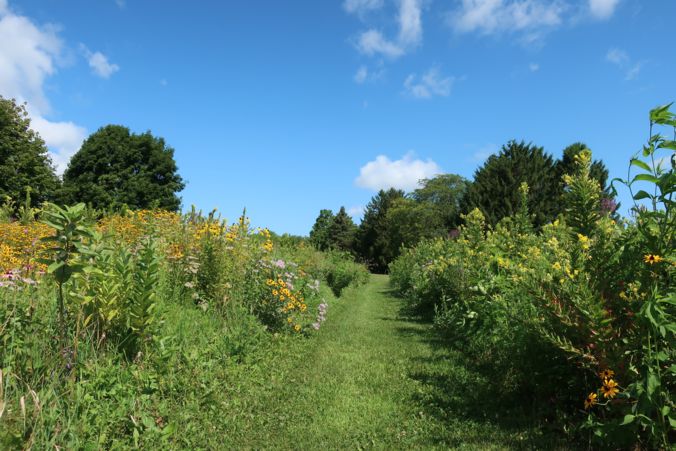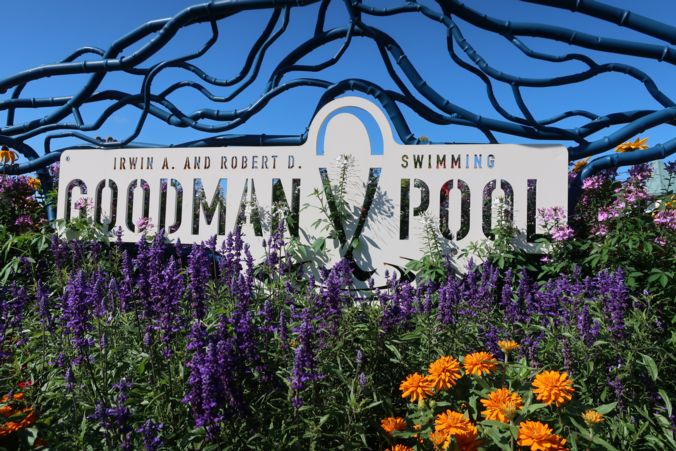Progress for pollinators continues in the city and in particular in Madison Parks, Golf Courses and Olbrich Botanical Gardens. The Parks Division uses a number of strategies to protect and enhance habitat for pollinators.
Our primary focus is to properly manage land, which we do according to our adopted Land Management Plan. We identified various habitats within parkland, including prairie managed meadows and blue grass no-mow meadows, as well as landscape beds that are of significant importance to pollinators.
With more than 5,700 acres, Madison Parks recognizes the importance of pollinators, by maintaining meadows and prairies with properly timed and spot mowing to preserve habitat and manage invasive plants.
In recent years work within parks have included:
- Partnering with UW Extension and volunteers at Washington Manor Park to install a roughly 2,000 square foot pollinator garden with more than 1,200 plants. Read more about this effort in Out & About Fall 2019.
- Clearing invasive weed species or overgrown landscape beds and adding pollinator-friendly perennials and annuals in various parks including Vilas, Penn, Eken, Rennebohm among others.
- Through Parks Beautification Program, we have nurtured significant landscape beds at Olin and Goodman Pool.
- Invasive and noxious weeds in the no-mow area in front of Olin Park pavilion were removed and more than 700 prairie plugs were planted.
- At Goodman Pool as well as many other parks, milkweed populations are nurtured within both meadows and landscape beds to help protect the monarch population.

Madison Parks golf course staff worked with volunteers to establish a large monarch waystation at Odana Hills Golf Course. In addition, Parks staff have created more than half an acre along the side of hole 2 at Odana Hills Golf Course into a prairie managed meadow. This is in addition to the native areas that already existed on golf courses previously.
In addition, Olbrich Botanical Gardens have made significant progress in protecting, creating and maintaining habitat that is ideal for pollinators as well as providing multiple opportunities to educate the public regarding various topics surrounding pollinators.
Lisa Laschinger
Assistant Parks Superintendent,
Operations, Community Services & Facilities

